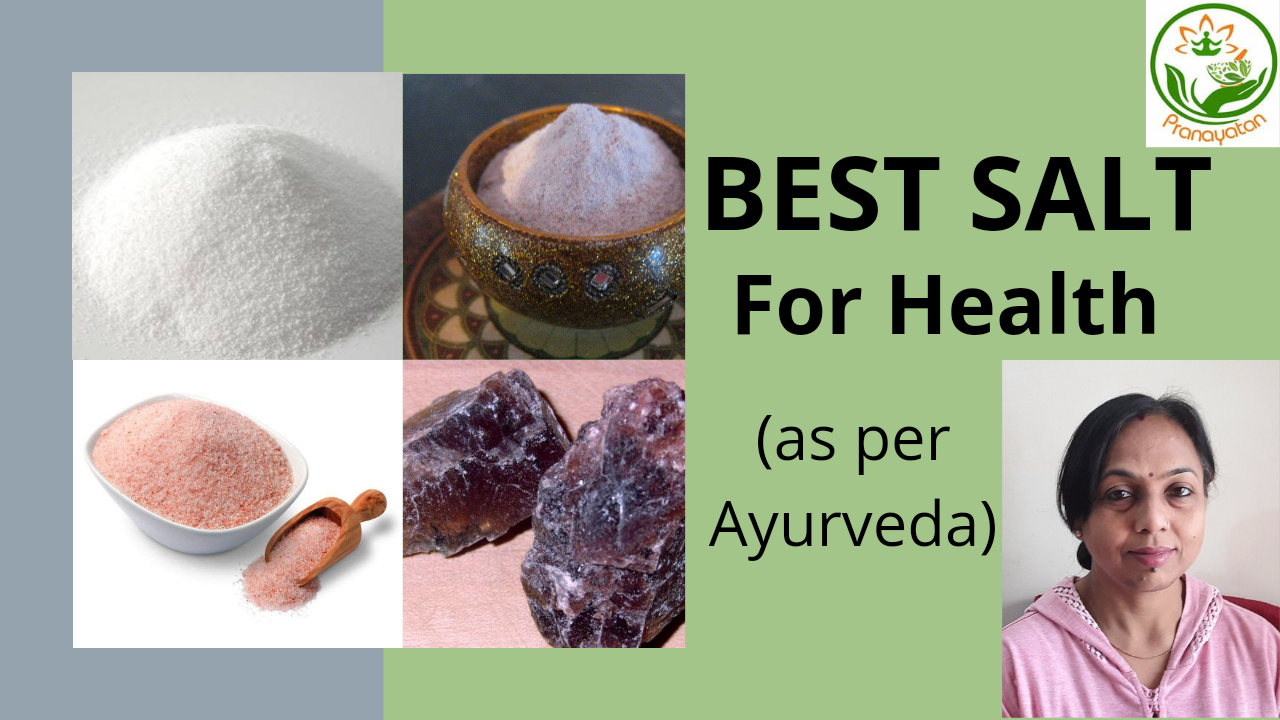
Lavana or salt is an essential part of our daily diet. We cannot imagine food without salt. Different salts are described in ayurvedic samhitas. So, here, we will discuss the Ayurvedic approach to salt.
What are the five kinds of salt used medicinally and for seasoning? Many of the salts we have today were not available in ancient India, and vice versa. As we know, salt is one of the six tastes. Everyone needs a small amount of salt in each meal, yet an excess can prove harmful to those of Pitta and Kapha constitutions.
Types of Lavana –
Sandhava, Samudra, Vida, Sauvarchala and Romaka are collectively known as Panchalavana, or the five salts. Besides this, we use iodized salt and LONA salt nowadays. Here, we will discuss the composition, benefits, and disadvantages of different salts.
Table salt – Normally, we use table salt, iodized salt, or regular salt. Neither table salt nor iodized salt was used before the modern industrial era. Table salt is essentially a refined salt containing mainly sodium chloride. 100 g of table salt contains 38.7 g of Na. Most table salts also contain added iodine, making them iodized salt. Iodine was first added to salt in the US in 1924 to combat Goitre—an enlarged thyroid due to iodine deficiency. From 1950, the Indian Government made it compulsory to provide iodized salt.
It also contains an anti-caking agent such as sodium aluminosilicate, which prevents lumping of salt, but harmful to our health.
LONA (Low Sodium) salt –
It is a low-sodium salt. We add potassium to it, that’s why it is known as LONA salt. It relaxes blood vessels & decreases blood pressure, but for the patients who are suffering from kidney problems, it is not advisable to give them this salt.
Moving on to consider the Ayurvedic approach to salt, there are several types of salt with distinctive properties. These salts are arranged in a specific order, from the least heating to the most heating; from the one that provokes Doshas the least to the one that provokes them the most. The best salt for our health is Saindhava lavana.
Saindhava Lavana: This salt has a variety of names, like rock salt, natural mineral salt, and Himalayan salt. Authentic Saindhava lavana may be white, pink or a combination of both the colors. In Ayurvedic literature, you may notice that Saindhava lavana sometimes goes by the synonym Sindhuja, because it comes from the province of Sindh. It contains 95% of NaCl & 5% of minerals. This salt contains approximately 80 minerals, like Lithium, Magnesium, Potassium, Phosphorus, Calcium, Iodine & Iron, etc. Every 100 g of salt contains 34 g of Na.
Saindhava lavana is the most suitable salt for Pitta to use in moderation. It is has a cooling energy, unlike other types of salt, and can help balance all three Doshas when used judiciously. It is beneficial to the eyes, improves the sense of taste, has an aphrodisiac effect, calms hiccups, and benefits the heart. It is considered that this salt provides positive energy; so many artefacts are also made from it.
Samudra Lavana: This is sea salt. Although sea salt is not cooling like Saindhva salt but it is not excessively heating either. So it can be used in moderation cause it does not provoke Pitta too much. It is purgative and slightly demulcent and helpful in alleviating colic. It improves the taste of food, aids digestion, and is beneficial for the heart.
Vid Lavana: This is an artificially prepared salt with a slight alkalinity to its taste. It is a controversial salt, not used in day-to-day life. A 20th-century text, Rasa Tarangini, indicates that it is made by incinerating the mixture of Romaka lavana and powder of Amalaki in a closed chamber in an intense heat for six hours. On the other hand, the texts Rasendra Chudmani and Ayurveda Prakasha suggest that Vid lavana is made by burning the wood of Karira (Capparis decidua) and Peelu (Salvadora persica). Whatever be the method of manufacture, the end product is mostly sodium chloride only.
Sauvarchala Lavana: Often known by its Hindi name, Kala namak, this is also called Black salt and Sochal salt. It has a slightly sulphurous taste and smell. 100 g of this salt contains 34 g of Na. It is an interesting fact that this salt is not naturally black. It is made by boiling the fruits of Haritaki (Terminalia chebula ) in seawater. It is light to digest and has a pungent taste, so, used in Chat masala also.
The other method of preparing Kala namak using washing soda and sodium carbonate is known as shudddha swarjika kshara in Sanskrit. The sodium carbonate is dissolved in water, after which the rock salt is added and stirred until it dissolves. This mixture is heated in an intense fire until the water content evaporates and crystals of black salt form. Sauvarchala lavana clears the channels of the body, improves digestion, and is beneficial for colic and constipation. It is good for the heart and helps clear the throat. Besides this, it has anti-histaminic & anti-inflammatory properties also.
Romaka Lavana: Also known as Sambar salt, it is harvested from salt flats on the shores of Sambhar Lake in Rajasthan, India’s largest salt lake. Acharya Sushrut considers this to be an intensely heating and sharp salt. It is vyavayi means it spreads rapidly throughout the body. Pungent and light, it calms Vata, coats the inner channels, and is purgative and diuretic.
Audbhida Lavana: This is Earthern salt, prepared from salty, alkaline soil. It is even more heating and sharp than Romaka, and can have a burning and corrosive action. It penetrates the minute channels of the body. Although it is somewhat alkaline and must be used with care, it has a Vata-soothing action and is used in certain Ayurvedic medicines such as Chitkrakadi Vati, used for indigestion.
Some texts do not differentiate between Romaka and Audbhida lavana, considering them to be synonymous. If we use Sendha namak and Kala namak in day-to-day life, it will be better for our health.

